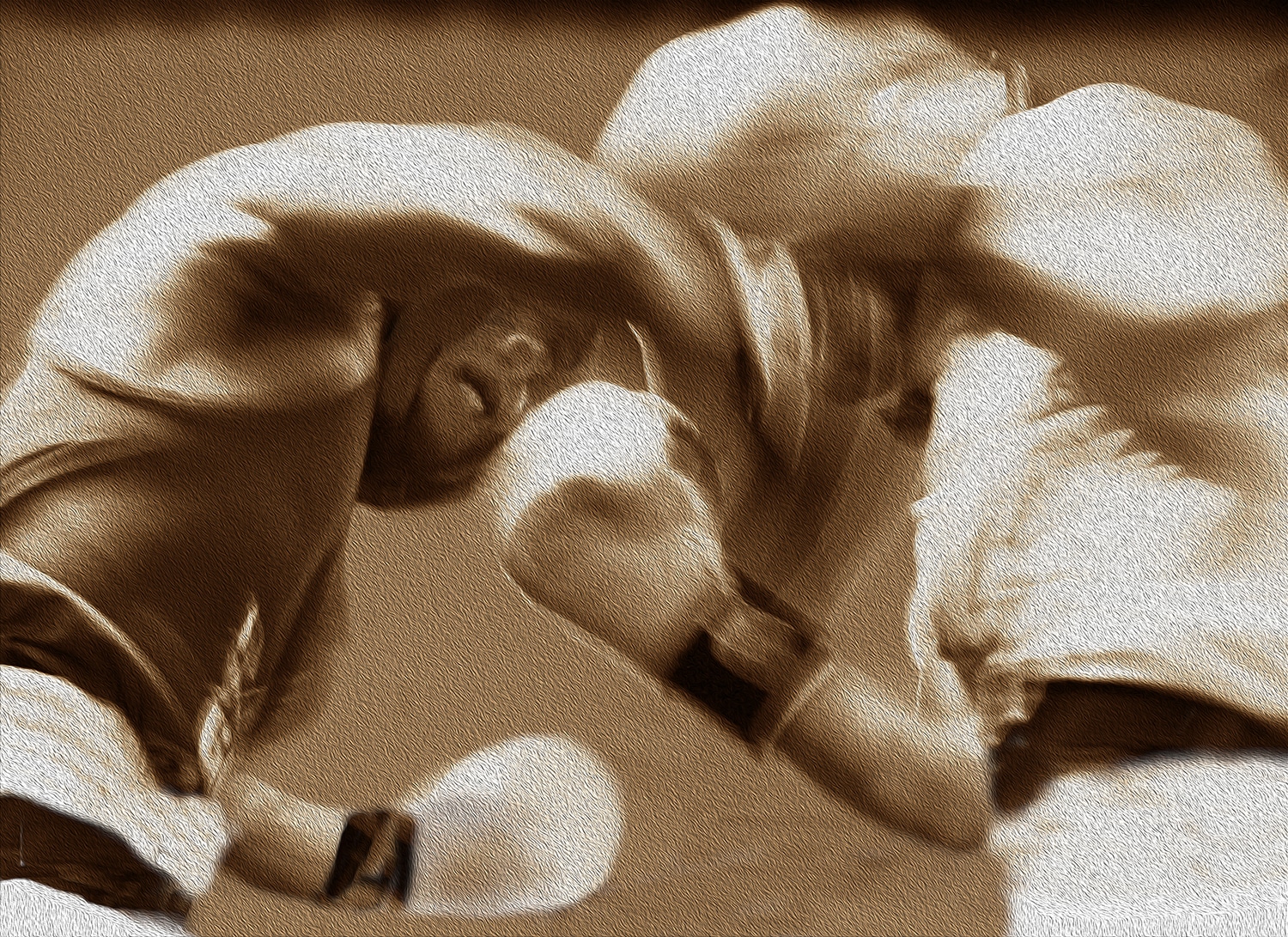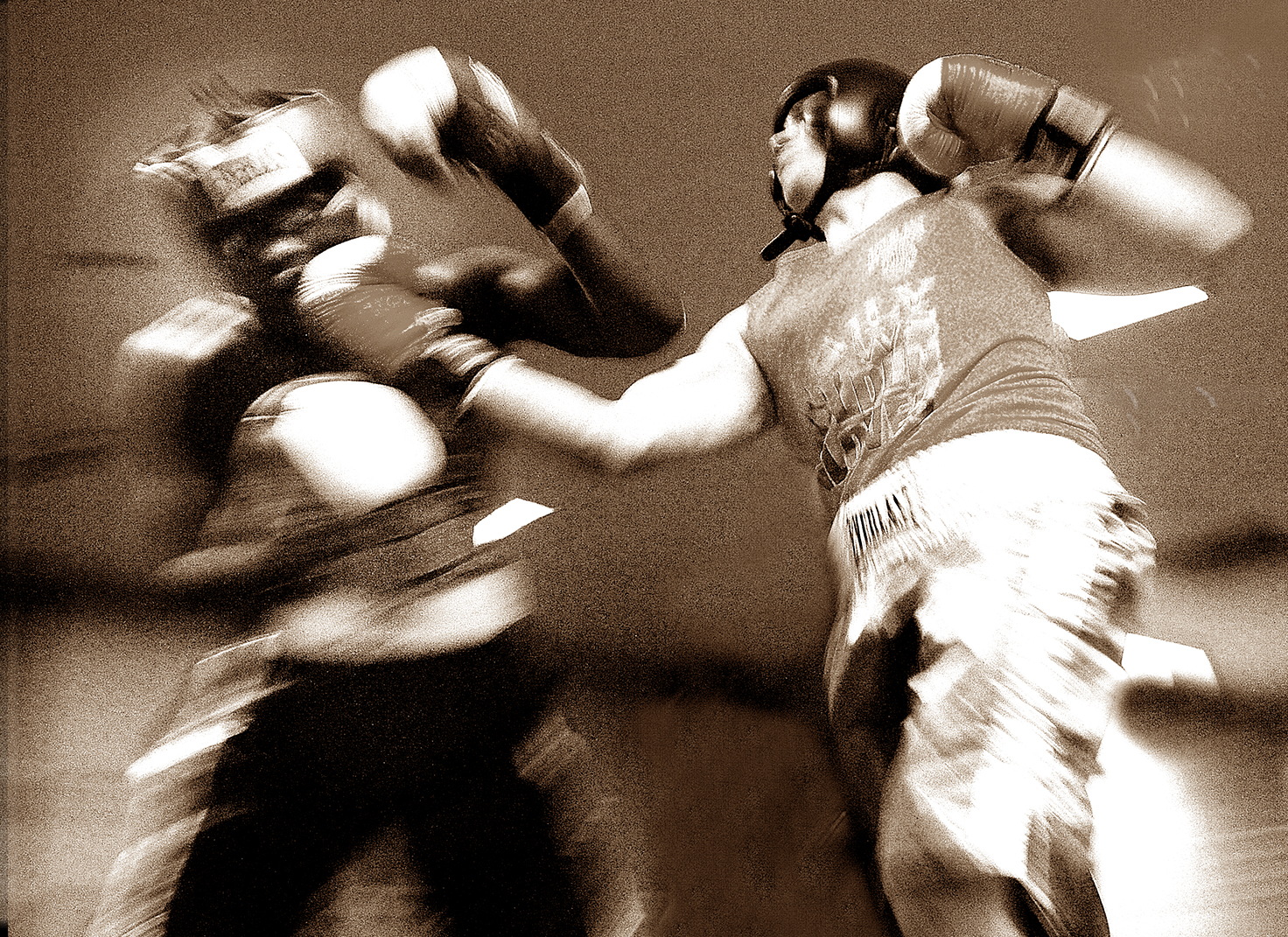There was always one or two at every Golden Gloves.
You’d see them in the early rounds, never in the finals. They arrived alone at whatever school or church was hosting that night and stand in the wrong line.
That’s when I first spotted him. I won’t say his name, but I knew right away that he was unattached, that he had never trained in a gym.
The temps were below freezing that night, with wind gusts that pierce a military parka. Everyone on that line was shivering except him. He was too busy trying to look tough.
One of the organizers opened the door and, before letting anyone it, shouted from the entrance, “This line is for fans–coaches and boxers over there,” pointing towards the left, where I was with a pair of welterweights who had been getting ready since the previous summer.
He walked over and took his place right behind us, trying to look like he had been through this before. The other fighters were loose, joking and shaking familiar hands.

Their legs had run the miles, their hands had sparred the rounds.
The unattached fighter watched without making eye contact, scowling like Sonny Liston.
He clutched his white boxing passbook, the one that documents his ring record. I peeped inside when he opened it – the pages were blank.
Once in the locker room, word spread fast. “We got one over there,” they motioned with their nose. They all knew he was unattached, inexperienced, and ill-prepared. Every boxer in the room secretly hoped to get the luck of the draw and be chosen to face him in the ring.
Inside the locker room, he found an empty spot on the bench and pulled out his trunks and shoes. His gear looked good and by the way he dressed for the occasion, I could tell he thought this was going to be his night. His armchair confidence was on high.
He too had run some miles but the hundreds of punches he had thrown were at empty air with no one to correct his form.
“Look straight ahead, not down,” he was told when he stepped on the scale. “Don’t move.”
“What’s your name?” He got that right.
“What’s your affiliation?” He paused.
“What gym are you with?”
“None,” he tells them. Everything comes to a halt. For about two seconds, the only movement in the room were the eyeballs focusing on him.
“You need someone to work your corner,” he’s told.
When it comes to working with the unattached, most trainers want nothing to do with it. But there’s always one who strikes up a conversation – partly out of pity and partly because there’s a small chance the unattached fighter has potential.
The bout sheet goes up. “Who’d you get?” Everyone asks each other.
The unattached fighter is clueless. “Go look for your name on the list,” I tell him.
“Who you got?”
“Keith-something,” he said.
“That’s him over there,” we tell him.
Keith-something is in the back, trying hard to hide his smile. He’s feeling good and thinks he has a chance to be “Fighter of the Night.”
The fights are about to start, and a serious energy fills the room. The fighters get their hands wrapped and start to shadowbox. The unattached fighter stretches and scowls.
“What do you think?” I asked the lead trainer with us. We’ll call him Coach.
“Ever box before?” Coach asked him.
“A little.”
“How did you train?”
Roadwork. Sit-ups. Push-ups. Eating right.
“You can’t fight without a coach,” he’s told. “Listen to me, it might not be so bad.”
He accepted his offer. Coach wrapped his hands with gauze and tape.
“So, this is how it feels,” his expression seems to say.
He tinkered with the wraps a bit and punched into the palms of his hands.
“Let me see your combinations.”
They looked good and you can tell he watched a lot of boxing on television. Coach gives him a crash course on the rules of competition – nine pages of rules explained in twenty seconds.
The crowd outside roars. “We’re missing a good fight,” someone says. Another person runs inside, “Yoo, they’re going at it.”
Moments later a trainer with a blood-stained towel walked in. Behind him was a teen covering his nose with a blood-stained towel. “It’s not broke,” he kept repeating.
The unattached put competition gloves on for the first time. They’re longer, wider, and heavier than any gloves he has ever worn, he found out. He threw punches but they were slower, wider.
“Bring your hands back higher,” we told him. He tried again but time ran out.
“Next!”
We waited in the tunnel until the other fighters exited the ring. You could feel the crowd from the aisle.
The unattached fighter kept messing with his headgear. Like all fighters who put it on for the first time, he found it heavy, tight, and he soon found out, was filled with blind spots. “Don’t stand in front of him and throw the jab,” we remind him.
It’s his turn to fight.

“Don’t make eye contact with the fans,” he’s told. “Ignore them.”
He can’t help himself. From the left, someone shouts, “He looks scared.” He turned to see whose lips those words came from, only to see about five laughing faces.
From the right, someone wished him luck. He nodded towards them.
Ignore them, we kept telling him.
In the ring, Keith was calm during the introductions. He was used to the height of the ring, the brightness of the lights, and the softness of the canvas. Our guy was a tourist in the ring, and everyone knew he was lost.
His mouthpiece didn’t fit right, his trunks kept moving to one side, and the laces on one of his boots was longer than the other because he missed two holes when he laced up. Even the referee looked annoyed when he saw him.
The bell rang.
He rushed to the center of the ring and wound up his right. He was going to upset the odds, score an upset and prove everyone wrong – with the very first punch. He had rehearsed this moment countless times in his mind. He was ready.
The punch missed.
All his punches missed.
They clinched. He was warned for fouls he did not know he committed. Keith waited for those openings he knew would come.
One minute into the round and our guy was warned twice and given two standing-eight counts.
Finally, he remembered he had a corner. “Throw the jab,” Coach motioned to him. He tried one. It was a noodle, bent at the elbow. He tried another and it missed by about a foot.
Then Keith teed off. His punches sounded like softballs bouncing off the headgear. Seconds after, the fight was over. Our guy was hurt and did not know it. That kind of “hurt” only lasts a few seconds, there’s no pain, and it leaves confusion instead of contusions. “I’m just a little dizzy,” he told the physician.
He wobbled out of the ring and Coach told everyone in the front rows, “I just met him.”
Back in the dressing room, Coach told him to join a gym. The fighter just sat there shaking his head and repeating, “damn.” He did not remember the second or third standing eight-counts. “I thought the ref was just talking to me.”
He collected his train fare, then sat in the stands for a fight or two, but he was not watching. He was waiting until the crowd forgot who he was. Then he slipped out the place, without saying goodbye, hiding the leather skid mark on his face by facing down, hiding his face like Floyd Patterson did the night he fought Sonny Liston.
“Come to the gym,” we told him before he left.
We never saw him again, but we saw others like him. Not in the gym, at the Gloves. Every year we saw them. One or two in the early rounds, never in the finals.
